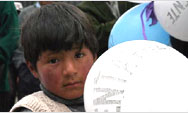Southeast Asia Regional
Program
The Southeast Asia region is of increasing concern in the global
HIV/AIDS pandemic. The combination of injecting drug use, mobility
within and between countries, the sex industry, stigma, discrimination
and poverty makes the region a fertile ground for the spread of
HIV/AIDS. The South and Southeast Asia region are home to nearly 4
million HIV-infected individuals and some of Asia’s highest national HIV
prevalence rates.
The strategic approach to HIV/AIDS of the Regional Development Mission for Asia (RDMA) of the United States Agency for
International Development (USAID) is to act as a regional catalyst for technical leadership, ultimately increasing the impact of
investments in HIV/AIDS and other infectious diseases within the region.
The goals of RDMA’s HIV/AIDS strategy in the region are to reduce the incidence and prevalence of HIV/AIDS and to mitigate
its impact on people living with HIV/AIDS (PLWHA) and their families. This entails reducing HIV transmission among most-atrisk
populations (MARPs). The primary target MARPs are injecting drug users (IDUs), men who have sex
with men (MSM), sex workers and their clients, and PLWHA.
View the USAID HIV/AIDS Health Profile for Southeast Asia - March 2008 [PDF,
453KB]
Related Links
Country Programs in this Region:
USAID Non-presence Countries Assisted by the Southeast Asia Regional Program:
|


